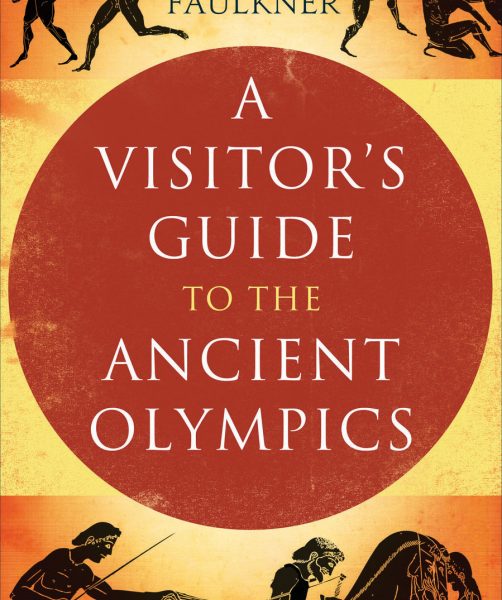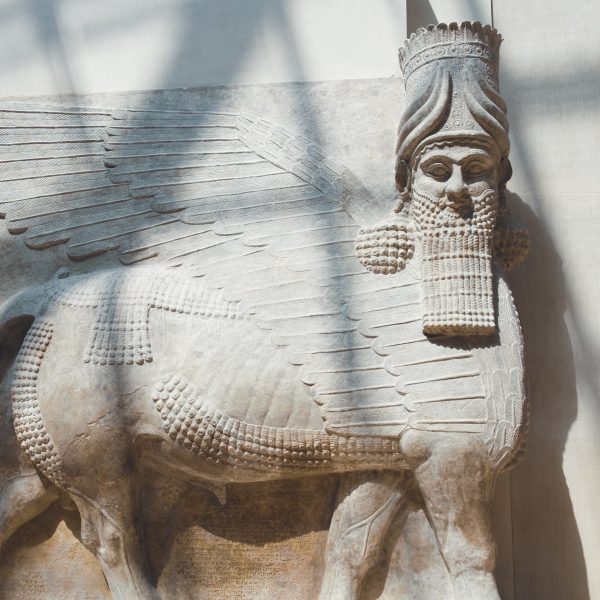London 2012: Ancient Olympic Boxing, A Sickening Spectacle
Were the ancient Olympic Games anything like the competitions we know today? Neil Faulkner’s A Visitor’s Guide to the Ancient Olympics transports us to the games of 388 B.C., providing a lively guided tour of the ancient Greek Olympics and bringing to life the sights and sounds (and smells) of the competition—which were very different from what visitors to this summer’s London Games are likely to experience.
In the Olympic Stadium of 2,400 years ago there were no stands, no shade – and no women allowed. Visitors sat on a grassy bank in the searing heat of midsummer to watch naked athletes compete in footraces, the pentathlon, horse and chariot races, and three combat sports – wrestling, boxing, and pankration, everyone’s favorite competition, with virtually no rules and considerable blood and pain.
Reading from the book, Neil Faulkner describes boxing at the ancient Olympics, a far more violent and gruesome spectacle than its modern equivalent. Listen here.
Neil Faulkner—
The Boxing
Next up is the boxing, the most lethal of the Olympic combat sports. Padded gloves are used in training, but not in contests. Instead of gloves, boxers wear 4m-long leather thongs softened with oil or animal fat, which are wound tightly around hands and wrists, leaving only the fingers free, and secured using a loop at each end. The fingers are left free so that they can be clenched to punch or opened to parry.
The purpose of the thongs is to protect the hands of the wearer (fancy versions are lined with fleece). They do nothing to soften the blow to the victim; on the contrary, they often result in severe cuts. Though the technical name for them is himantes , they are nicknamed murmikes (‘ants’) because of the stinging wounds they inflict.
Wearing nothing but their himantes and sometimes fleece armbands to wipe away sweat, the contestants advance at one another with murderous looks and touch fists. There is no bonhomie, no friendly banter, no gentlemanly handshakes.
 Once the Judge has ordered the start, the struggle is relentless: with neither ropes to which a contestant can cling for safety, nor intervals between rounds for respite, a Greek boxing contest is a single brutal slugging match that continues until one man is either knocked insensible or offers his submission by raising the middle finger of his right hand. The rules ban blows to the body – the head is the sole legitimate target – and they place no restriction on relentless pummelling, even when a man is knocked to the ground. The only real restriction is that gripping an opponent – to hold him so he can be battered – is illegal.
Once the Judge has ordered the start, the struggle is relentless: with neither ropes to which a contestant can cling for safety, nor intervals between rounds for respite, a Greek boxing contest is a single brutal slugging match that continues until one man is either knocked insensible or offers his submission by raising the middle finger of his right hand. The rules ban blows to the body – the head is the sole legitimate target – and they place no restriction on relentless pummelling, even when a man is knocked to the ground. The only real restriction is that gripping an opponent – to hold him so he can be battered – is illegal.
Boxers dance warily around one another, fists raised close to the head, ready to parry sudden blows. ‘They faced each other and put up their massive fists together,’ says Homer of the fight between Epeios and Euryalos at the funeral games of Patroklos, ‘then fell to, and there was a flurry of heavy hands meeting. There sounded a fearful crunching of jaws, and the sweat poured all over their bodies.’
Some aim to tire a heavier opponent in a long fight, until his reactions slow and his guard slips. There are even boxers who boast that their faces are unscarred, such is their success with these tactics. Others, sure of the weight of their punch, seek opportunities to attack from the outset.
Almost any type of blow except gouging is allowed, and boxers deliver upward hooks, upper cuts, rabbit punches, blows with the side and heel of the hand, even violent jabs with hand outstretched and fingers flat. Both right and left hands are used as opportunity allows.
Fights can be long, the combatants becoming lacerated and bruised, sometimes pouring blood from noses, cheeks or brows. With the summer sun overhead, streams of sweat sting the eyes, and dust parches mouth and throat. The finalists, moreover, may have to fight like this several times before the day is out.
You will have no trouble spotting the seasoned boxers in the crowds: it is not just their massive shoulders, arms and fists that give them away, but also their facial scars, broken noses, lumpy brows and cauliflower ears. Wrestlers and pankratiasts can be beautiful; veteran boxers are invariably scarred and battered.
If the fight drags on without result, a tie-breaker may be announced. Each man then stands to receive his opponent’s punch in turn, until one is knocked out. But this is rare, and the end can be sudden as men tire. As Homer describes it: ‘Then, as Euryalos peered for an opening, god-like Epeios moved in for the punch and struck him on the cheek-bone – he did not stay on his feet long: his bright body collapsed under him where he stood … His dear companions surrounded him, and carried him through the assembly with legs dragging, spitting out thick blood, and lolling his head to one side.’
Boxing is the bloodiest, cruellest and most violent of the Greek sports. It is not unknown for men to die, sometimes at the moment of defeat, preferring death to disgrace. Prepare yourself for a gruesome, heart-stopping, and sometimes sickening spectacle.
Excerpted from A Visitor’s Guide to the Ancient Olmypics, Copyright © 2012 by Neil Faulkner.
Neil Faulkner is research fellow at the University of Bristol, fellow of the Society of Antiquaries, and codirector of several field projects. A freelance archaeologist and historian, his previous books include Apocalypse: The Great Jewish Revolt against Rome and Rome: Empire of the Eagles. He lives in Hertfordshire, UK.


























